smart #1 vs Hyundai Inster – Różnice i ceny w porównaniu
Koszty i zużycie
W kwestii ekonomii oba modele pokazują ciekawe różnice.
Hyundai Inster ma przekonujący przewagę cenową – jego cena zaczyna się od 105000 zł, podczas gdy smart #1 kosztuje 162500 zł. Różnica wynosi około 57502 zł.
Pod względem zużycia energii przewagę ma Hyundai Inster: z wynikiem 14.30 kWh na 100 km jest w niewielkim stopniu bardziej wydajny niż smart #1, który zużywa 16.80 kWh. Różnica to około 2.50 kWh.
Pod względem zasięgu smart #1 wypada trochę lepiej: osiąga do 440 km, czyli około 70 km więcej niż Hyundai Inster.
Silnik i osiągi
Moc, moment i przyspieszenie to klasyczne parametry, na których skupiają się entuzjaści – tu widać ciekawe różnice.
Pod względem mocy silnika smart #1 ma przekonujący przewagę – 428 KM zamiast 115 KM. To różnica około 313 KM KM.
W przyspieszeniu 0–100 km/h smart #1 jest przekonujący szybszy – 3.90 s wobec 10.60 s. Różnica wynosi około 6.70 s sekundy.
Pod względem prędkości maksymalnej smart #1 jest lekko lepszy – osiąga 180 km/h, podczas gdy Hyundai Inster kończy na 150 km/h. Różnica to około 30 km/h.
Różnica widoczna jest również w momencie obrotowym: smart #1 ciągnie wyraźny mocniej – 584 Nm wobec 147 Nm. Różnica to około 437 Nm.
Przestrzeń i praktyczność
Poza mocą liczy się też wygoda i funkcjonalność. Tu decyduje się, który samochód jest bardziej praktyczny i wszechstronny.
Miejsca siedzące: smart #1 oferuje w niewielkim stopniu więcej miejsc – 5 vs 4.
Pod względem masy własnej Hyundai Inster jest czytelny lżejszy – 1380 kg wobec 1780 kg. Różnica to około 400 kg kg.
Pod względem pojemności bagażnika smart #1 oferuje trochę więcej miejsca – 323 L wobec 280 L. To różnica około 43 L litrów.
W maksymalnej pojemności ładunkowej Hyundai Inster wypada minimalny lepiej – do 1059 L, czyli o około 73 L więcej niż smart #1.
Pod względem ładowności smart #1 wypada oczywisty lepiej – 470 kg wobec 357 kg. Różnica to około 113 kg kg.
Kto zostaje zwycięzcą?
Podsumowując, smart #1 jest nie daje rywalowi większych szans i zasługuje na tytuł DriveDuel Champion.
Oferuje lepszy, bardziej zrównoważony pakiet i jest praktyczniejszym towarzyszem na co dzień.
 @ smart Europe GmbH
@ smart Europe GmbH
smart #1
Koszty i Zużycie
Zobacz analizę szczegółową
Silnik i Wydajność
Zobacz analizę szczegółową
Wymiary i Nadwozie
Zobacz analizę szczegółową
smart #1
smart #1 zaskakuje miejskim wdziękiem i śmiałą stylistyką, która przyciąga wzrok bez krzykliwości, za to z dużą dozą praktycznego uroku. Jazda nim to przyjemność sprzyjająca codziennym dojazdom — zwinnie manewruje w korkach, a wnętrze oferuje przyjazne, nowoczesne otoczenie, które łatwo polubić.
szczegóły @ smart Europe GmbH
@ smart Europe GmbH
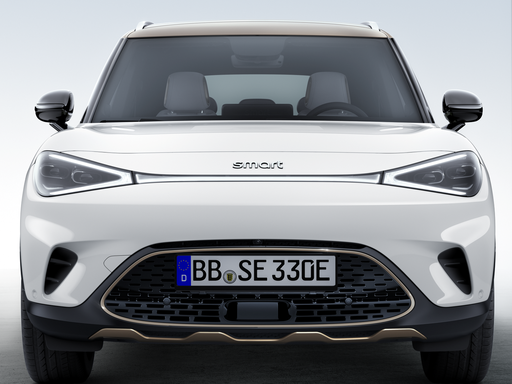 @ smart Europe GmbH
@ smart Europe GmbH
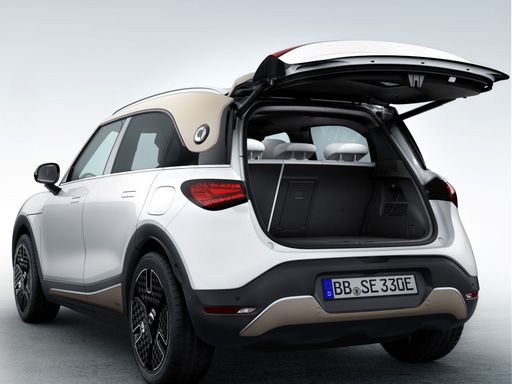 @ smart Europe GmbH
@ smart Europe GmbH
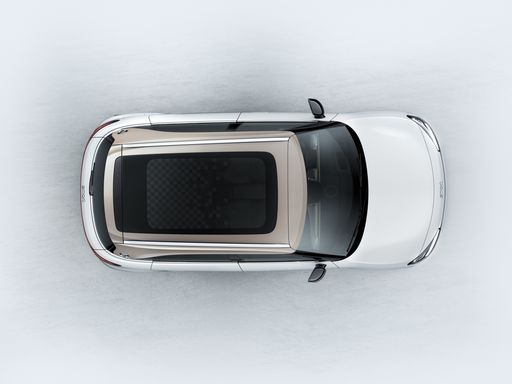 @ smart Europe GmbH
@ smart Europe GmbH
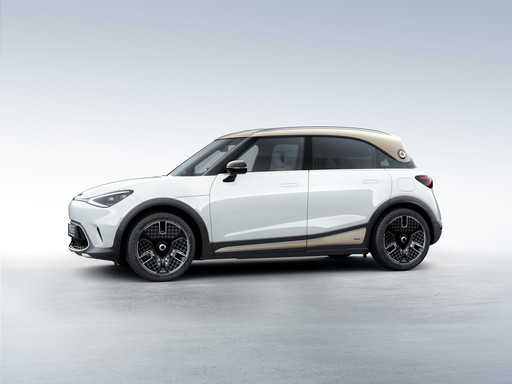 @ smart Europe GmbH
@ smart Europe GmbH
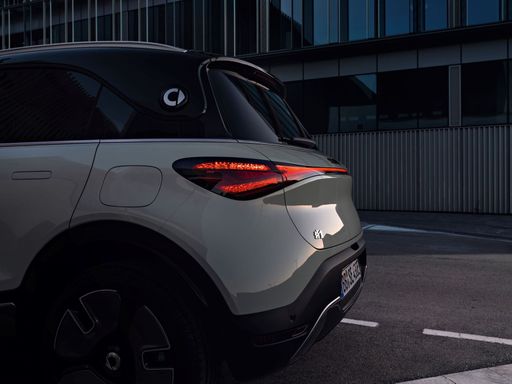 @ smart Europe GmbH
@ smart Europe GmbH
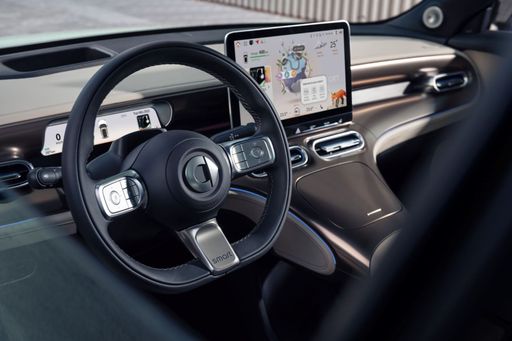 @ smart Europe GmbH
@ smart Europe GmbH
Hyundai Inster
Hyundai Inster to samochód, który zaskakuje świeżym stylem i praktycznym podejściem do codziennej mobilności. Dobrze zestrojone zawieszenie i przestronne wnętrze sprawiają, że to pewny wybór dla tych, którzy chcą komfortu bez przepłacania.
szczegóły @ Hyundai Motor Company
@ Hyundai Motor Company
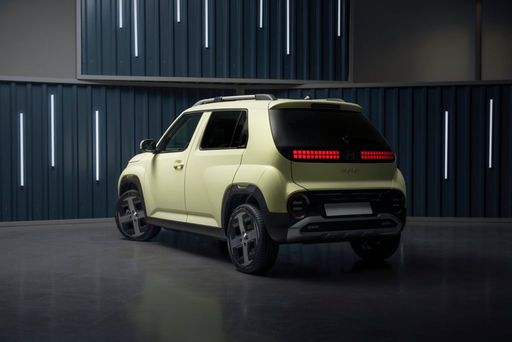 @ Hyundai Motor Company
@ Hyundai Motor Company
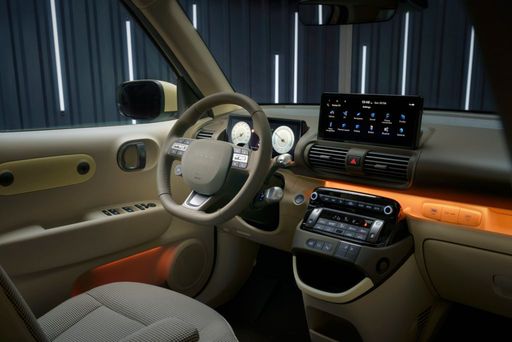 @ Hyundai Motor Company
@ Hyundai Motor Company
 @ smart Europe GmbH
@ smart Europe GmbH
|
 @ Hyundai Motor Company
@ Hyundai Motor Company
|
|
|
|
Koszty i Zużycie |
|
|---|---|
|
Cena
162500 - 230600 zł
|
Cena
105000 - 132200 zł
|
|
Zużycie L/100km
-
|
Zużycie L/100km
-
|
|
Zużycie kWh/100km
16.8 - 18.2 kWh
|
Zużycie kWh/100km
14.3 - 15.1 kWh
|
|
Zasięg elektryczny
310 - 440 km
|
Zasięg elektryczny
327 - 370 km
|
|
Pojemność baterii
47 - 62 kWh
|
Pojemność baterii
42 - 49 kWh
|
|
CO2
0 g/km
|
CO2
0 g/km
|
|
Pojemność zbiornika paliwa
-
|
Pojemność zbiornika paliwa
-
|
Wymiary i Nadwozie |
|
|---|---|
|
Typ nadwozia
SUV
|
Typ nadwozia
SUV
|
|
Miejsca siedzące
5
|
Miejsca siedzące
4
|
|
Drzwi
5
|
Drzwi
5
|
|
Masa własna
1780 - 1900 kg
|
Masa własna
1380 - 1433 kg
|
|
Pojemność bagażnika
313 - 323 L
|
Pojemność bagażnika
238 - 280 L
|
|
Długość
4270 - 4300 mm
|
Długość
3825 - 3845 mm
|
|
Szerokość
1822 mm
|
Szerokość
1610 mm
|
|
Wysokość
1636 mm
|
Wysokość
1575 - 1610 mm
|
|
Maksymalna pojemność bagażnika
976 - 986 L
|
Maksymalna pojemność bagażnika
1059 L
|
|
Ładowność
425 - 470 kg
|
Ładowność
317 - 357 kg
|
Silnik i Wydajność |
|
|---|---|
|
Typ silnika
Elektryczny
|
Typ silnika
Elektryczny
|
|
Skrzynia biegów
Automatyczna
|
Skrzynia biegów
Automatyczna
|
|
Szczegóły skrzyni biegów
Reduktor
|
Szczegóły skrzyni biegów
Reduktor
|
|
Rodzaj napędu
Napęd na tylne koła, Napęd na cztery koła
|
Rodzaj napędu
Napęd na przednie koła
|
|
Moc KM
272 - 428 KM
|
Moc KM
97 - 115 KM
|
|
Przyspieszenie 0-100km/h
3.9 - 6.7 s
|
Przyspieszenie 0-100km/h
10.6 - 11.7 s
|
|
Maksymalna prędkość
180 km/h
|
Maksymalna prędkość
140 - 150 km/h
|
|
Moment obrotowy
343 - 584 Nm
|
Moment obrotowy
147 Nm
|
|
Liczba cylindrów
-
|
Liczba cylindrów
-
|
|
Moc kW
200 - 315 kW
|
Moc kW
71 - 85 kW
|
|
Pojemność silnika
-
|
Pojemność silnika
-
|
Ogólne |
|
|---|---|
|
Rok modelowy
2023 - 2024
|
Rok modelowy
2025
|
|
Klasa efektywności CO2
A
|
Klasa efektywności CO2
A
|
|
Marka
smart
|
Marka
Hyundai
|
Jakie wersje napędu oferuje smart #1?
Dostępne wersje obejmują Napęd na tylne koła albo Napęd na cztery koła.
Wyświetlane ceny i dane są szacunkowe, oparte na niemieckich cenach katalogowych i mogą się różnić w zależności od kraju. Te informacje nie stanowią wiążącej oferty.
